A closer look at database trends among early-stage and growth-stage companies.
We created this report to better understand how teams are building and managing their databases today. Most reports focus on database popularity, but very few look at how those databases are actually deployed, replicated, and scaled in practice.
Our 2025 survey digs into those details, highlighting how teams are structuring their production environments and how those decisions evolve as they grow. We hope these results make it easier to see what modern database operations really look like for the teams building the next generation of software.
— The Springtail Team
This report is based on a database infrastructure survey conducted during the second half of 2025.
The survey was distributed through developer communities, social media platforms, and professional networks. It reached hundreds of startup professionals, including software developers, technical founders, and DevOps engineers, representing a broad mix of early-stage and growth-stage companies.
While we made every effort to gather a diverse group of respondents, the voluntary nature of the survey may have introduced some selection bias. The findings should therefore be viewed as directional insights into how startups are currently approaching database operations rather than as an exhaustive industry census.
The vast majority of startups rely on PostgreSQL as their primary database, reinforcing its position as the standard choice for modern application backends.
Most teams run their databases on managed cloud platforms, valuing ease of maintenance and predictable scaling over full control.
As startups grow, they are adopting replication, scaling, and analytics strategies that fit their specific workloads rather than one-size-fits-all patterns.
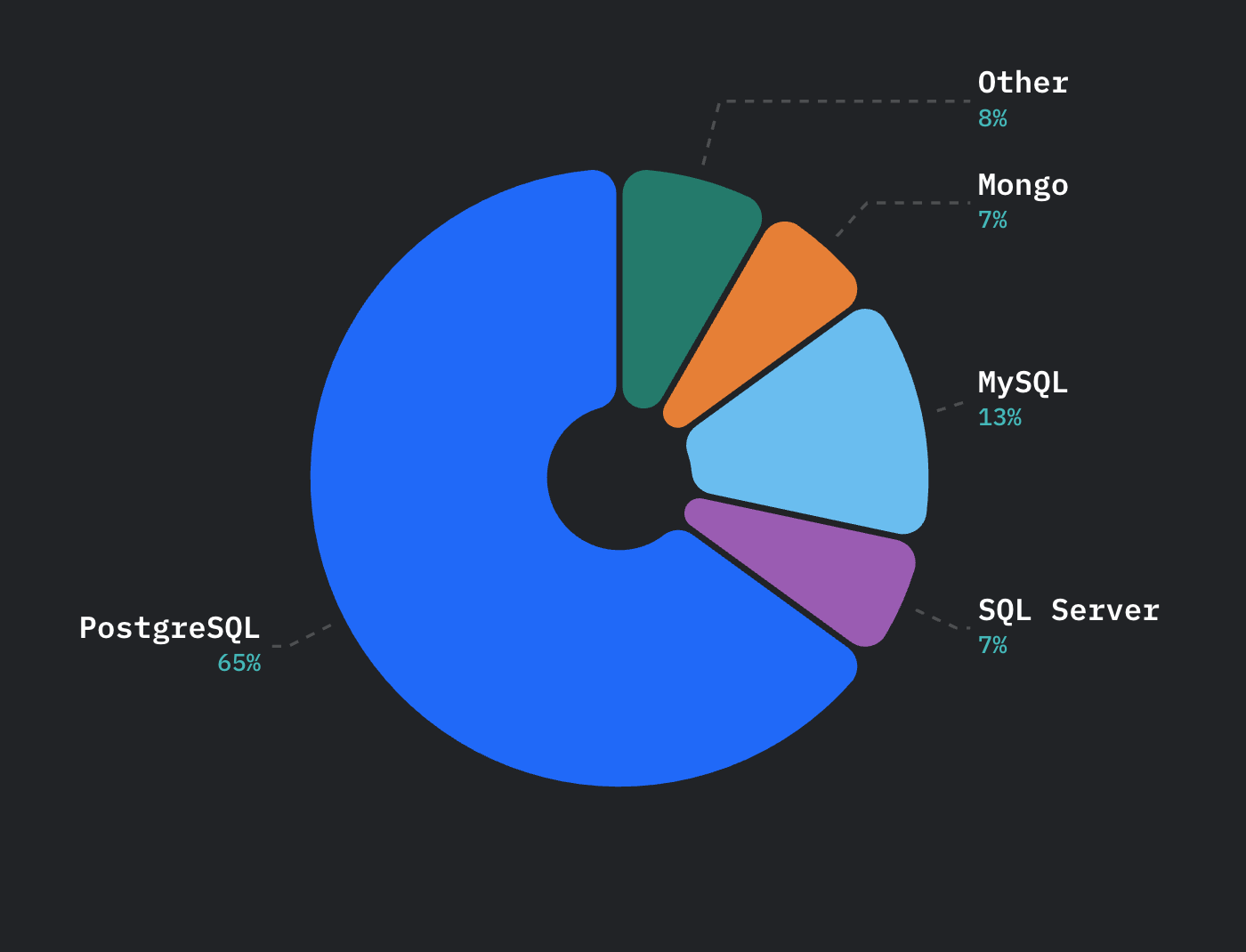
PostgreSQL remains the leading production database by a wide margin, reaffirming its status as the default choice for startups. Its maturity, strong tooling, and cross-platform support continue to make it an attractive foundation for operational workloads.
Other relational options like MySQL and SQL Server hold smaller but steady shares, while niche databases remain secondary choices for specialized use cases.
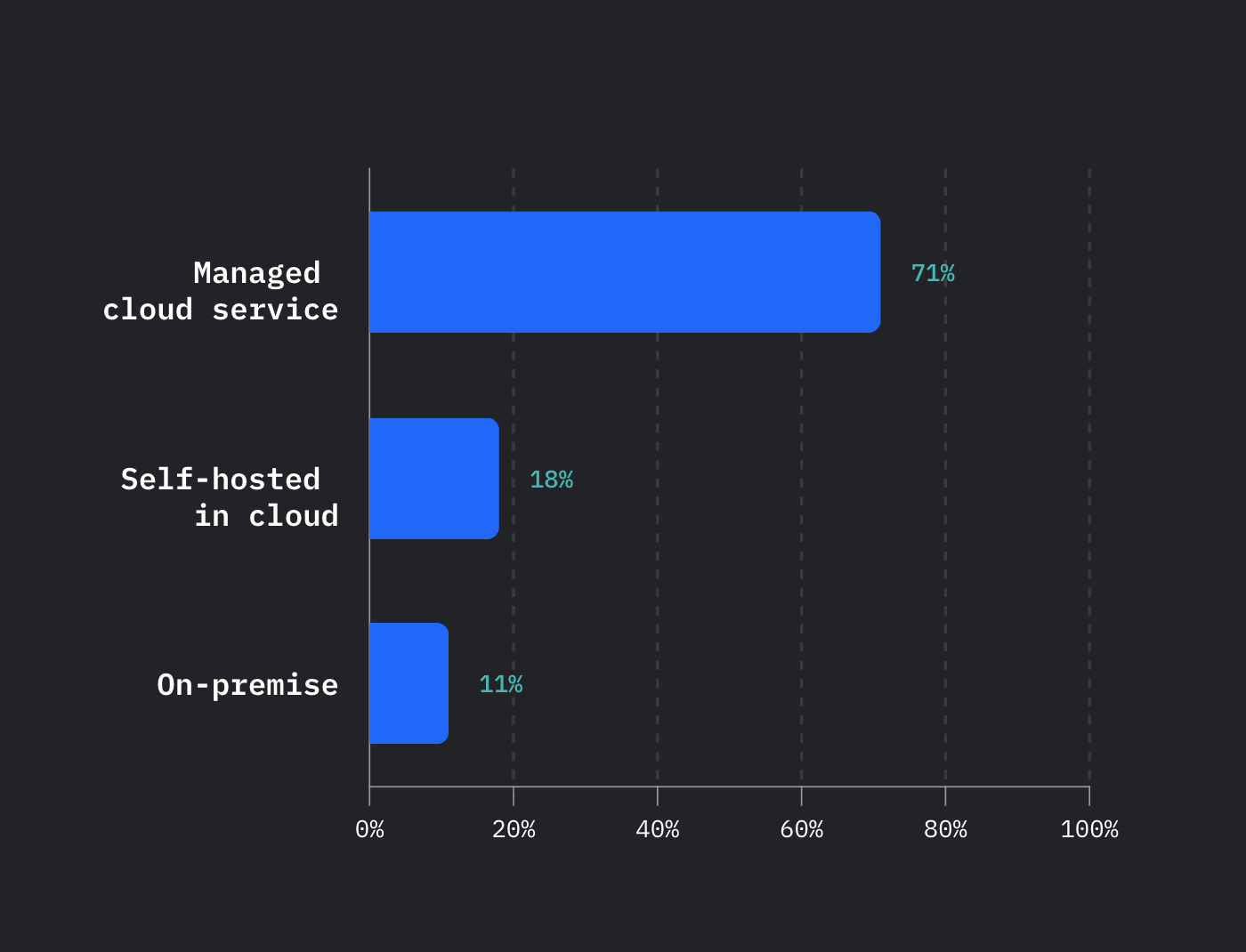
Managed cloud databases dominate deployment strategies, underscoring the continued preference for outsourced operations and predictable performance. A smaller share of teams self-host in the cloud or maintain on-premise setups, often for cost control, data residency, or compliance reasons.
These results are broadly consistent with our prior survey, reflecting how managed services have become the baseline for most production environments.
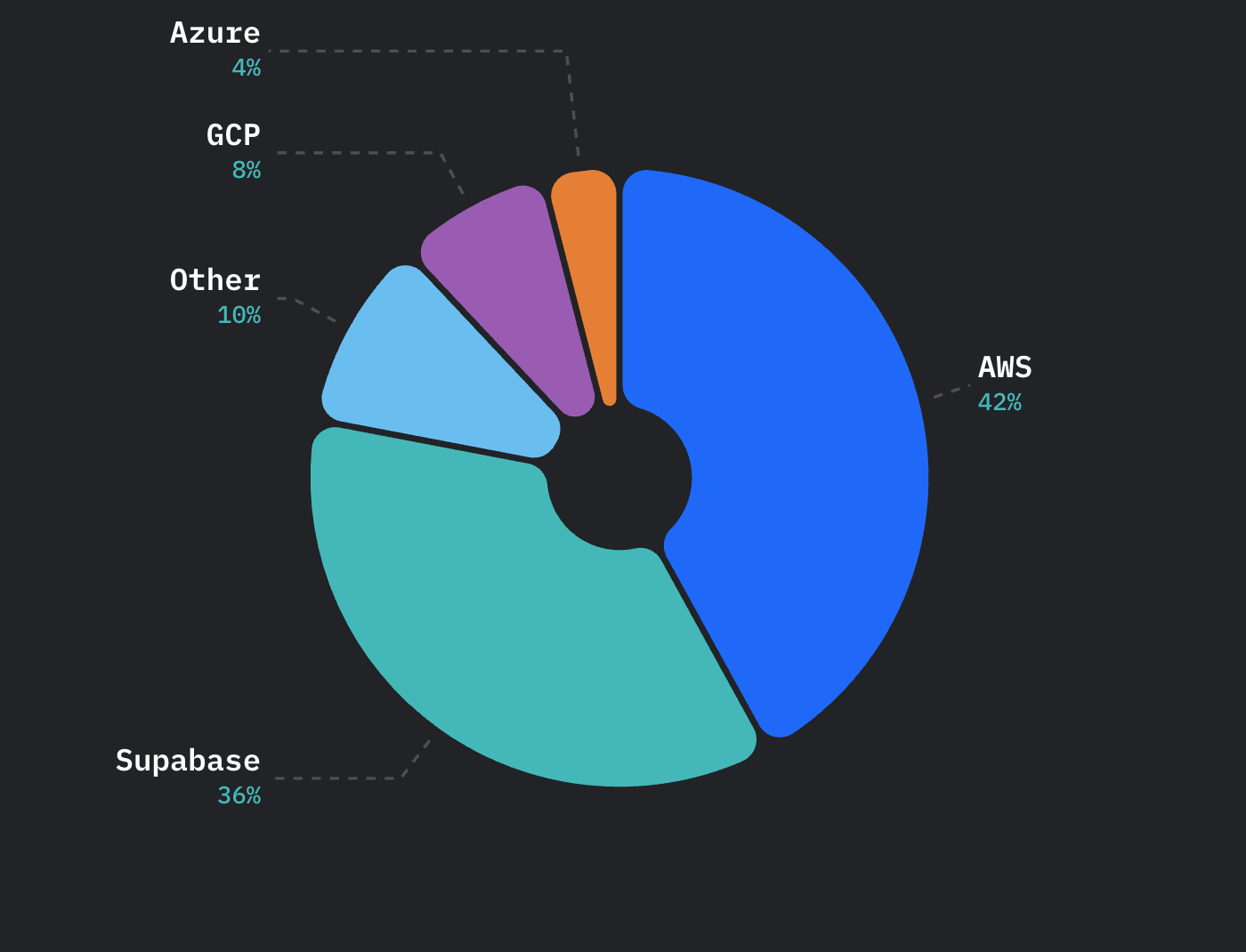
AWS leads among managed-service providers, but developer-focused platforms like Supabase now represent a meaningful share of adoption. The spread across major clouds and newer entrants highlights that teams value flexibility as much as reliability.
Startups appear to select managed services that best fit their preferred workflow rather than defaulting to a single provider ecosystem.
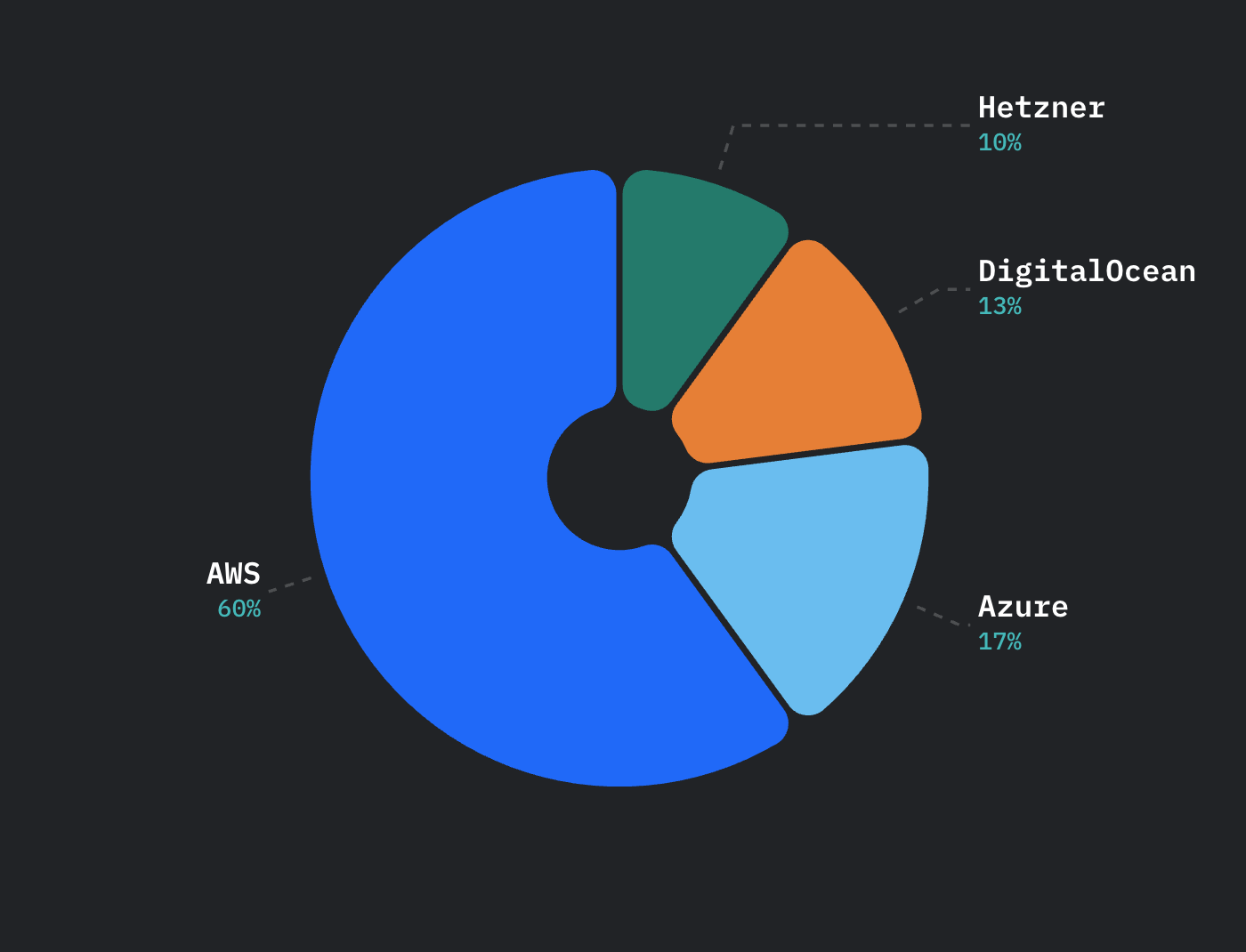
For teams managing their own databases, AWS remains the most common infrastructure choice, with Azure, DigitalOcean, and Hetzner following at smaller scales. This suggests that even when startups self-host, they still rely heavily on established cloud providers rather than traditional data centers.
The diversity of choices also reflects the appeal of balancing control with convenience.
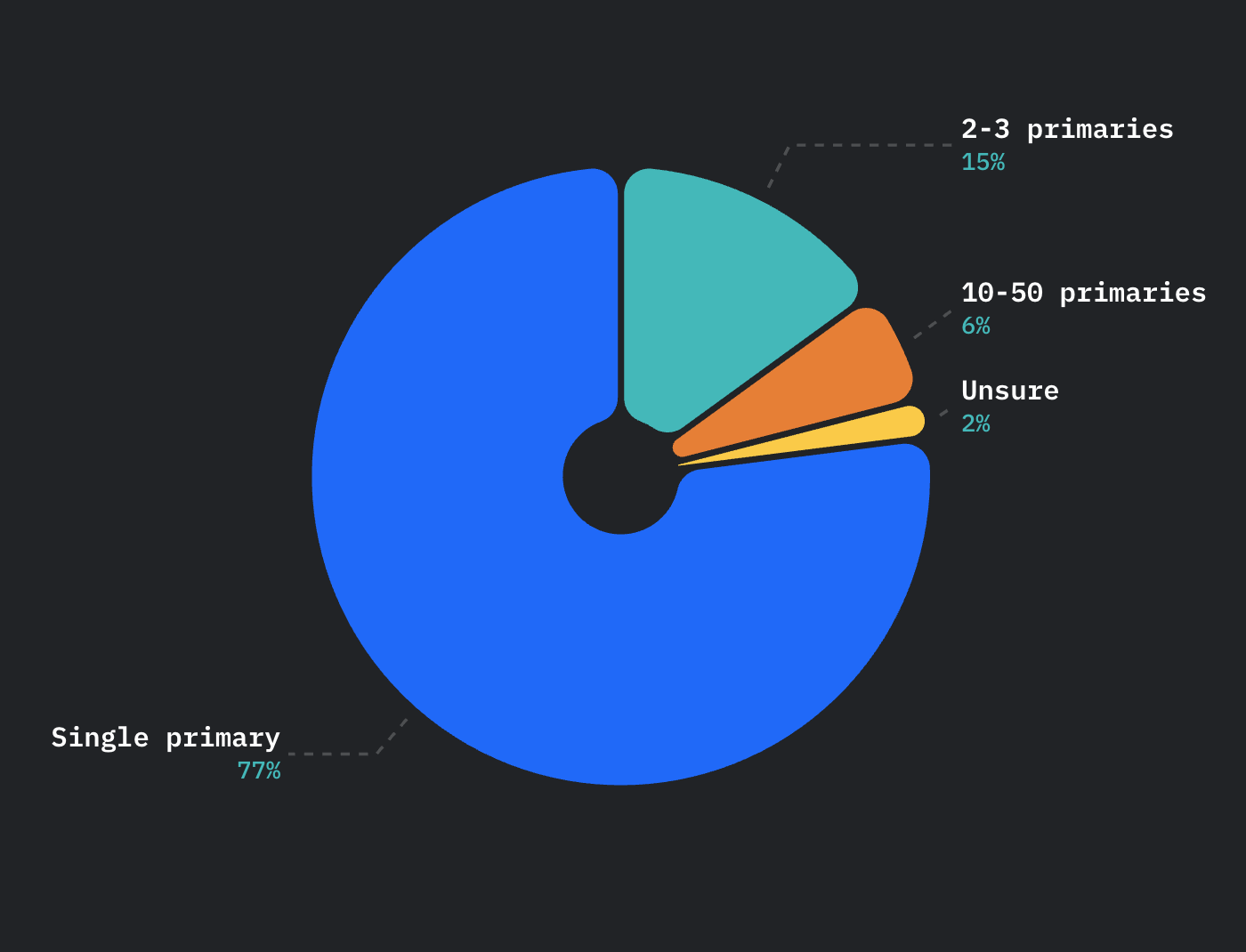
Most respondents operate a single-primary database, a pattern consistent with the previous year’s results.
Only a small fraction report multiple primaries or extensive sharding, indicating that horizontal partitioning remains rare outside of large-scale deployments. For most startups, simpler configurations still provide sufficient performance and reliability.
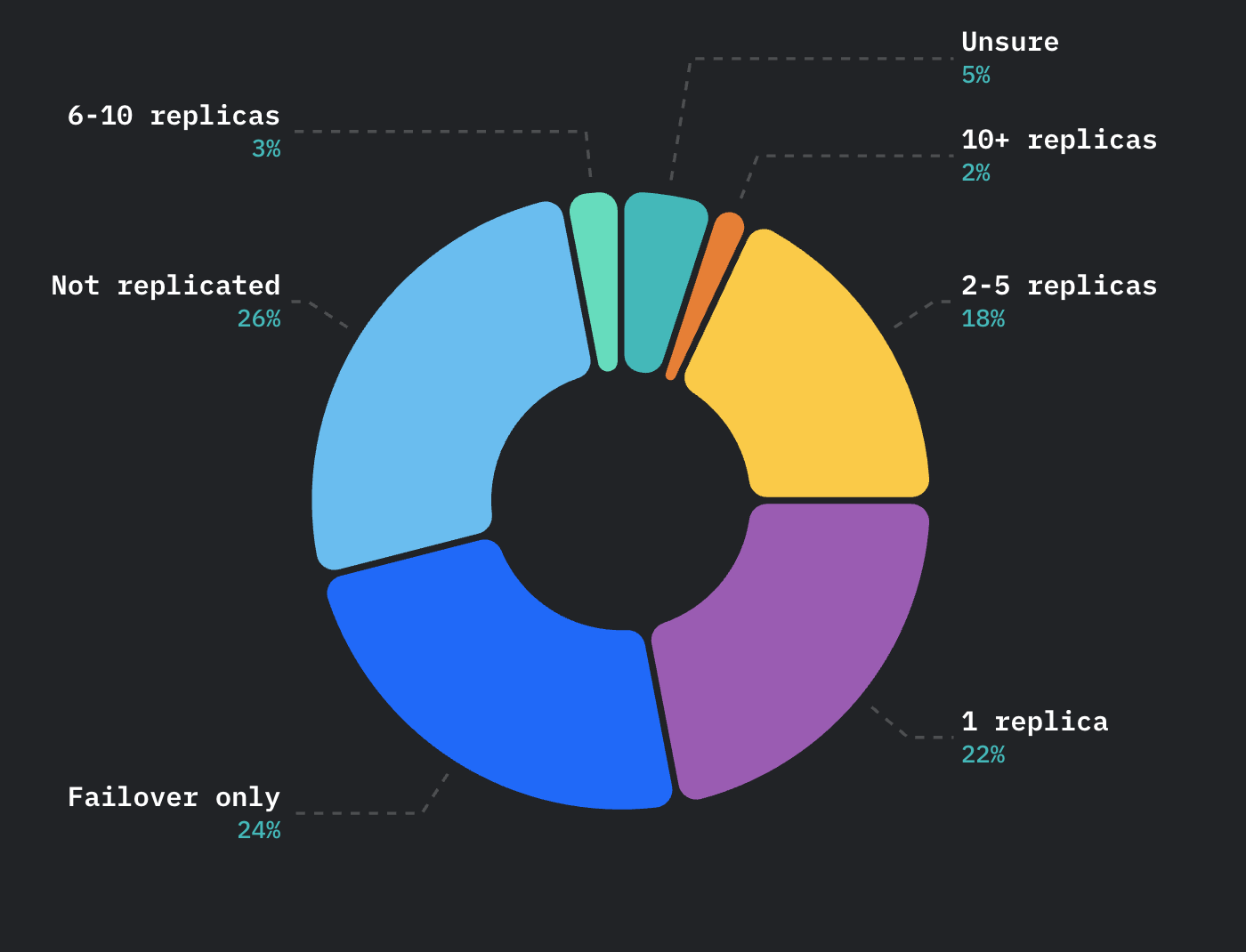
Replication practices vary widely across organizations. Roughly half maintain at least one replica, either for failover or read-scaling, while a notable segment operates without replication at all.
This diversity suggests teams tailor redundancy and scaling strategies to workload demands and traffic predictability rather than following a single standard pattern.

Most production databases fall between 10 GB and 1 TB, with a smaller share now reporting multi-terabyte instances. This range aligns with typical growth patterns as startups evolve from early-stage to production-scale systems.
The continued spread of database sizes illustrates that scaling is highly context-dependent, shaped by data retention habits and application complexity.
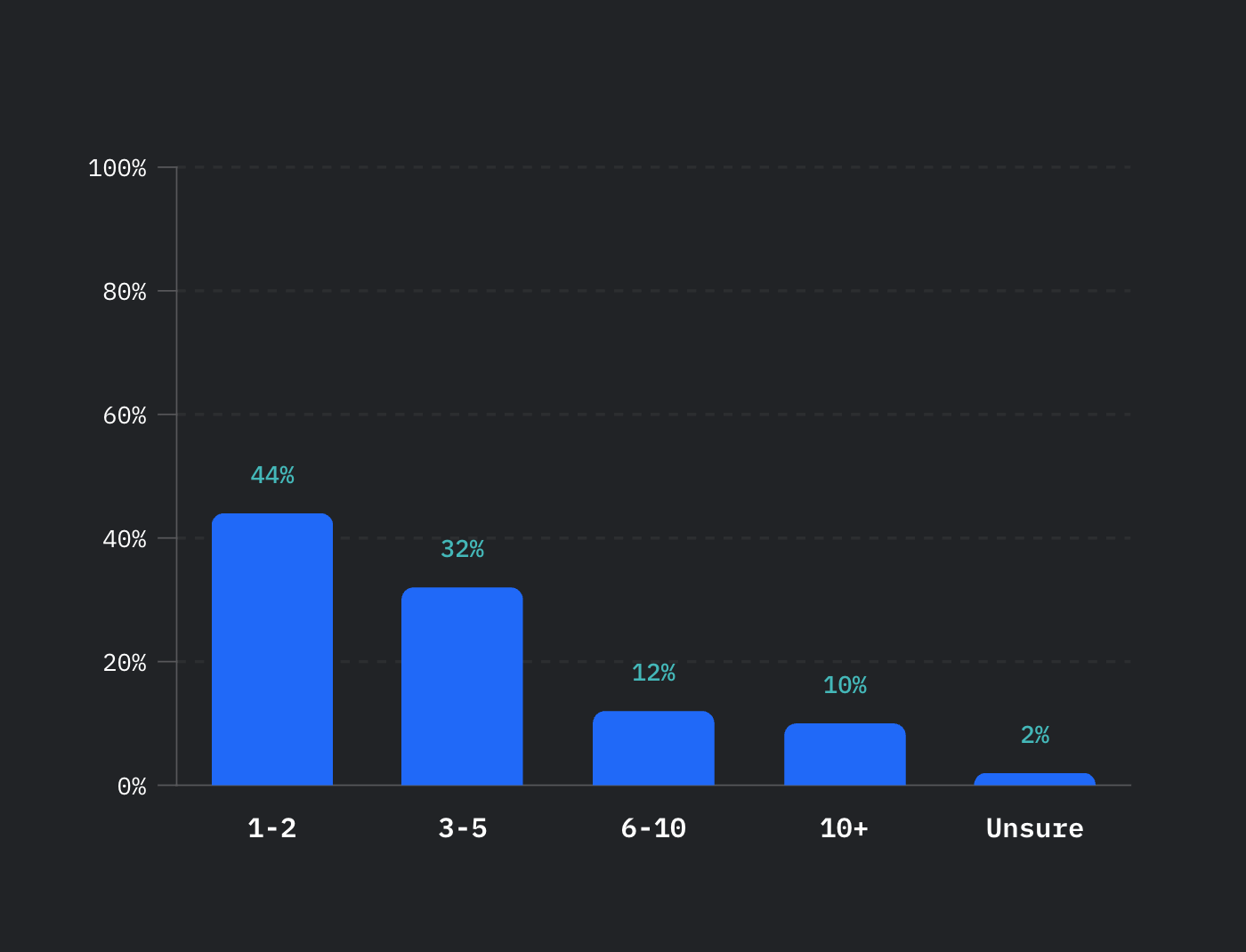
Databases most often serve one to five applications, but a growing subset connect ten or more.
This variation points to differing architectural maturity levels: smaller teams tend to centralize data access, while expanding organizations integrate more internal services, analytics pipelines, and external APIs. The results highlight the increasing role of databases as shared infrastructure across product ecosystems.

Half of respondents describe a balanced mix of reads and writes, while about a third report read-heavy workloads. This distribution matches expectations for SaaS and analytics-oriented products, where query activity dominates.
The relative consistency with last year’s data suggests that startup workloads have stabilized around similar operational profiles regardless of application type.
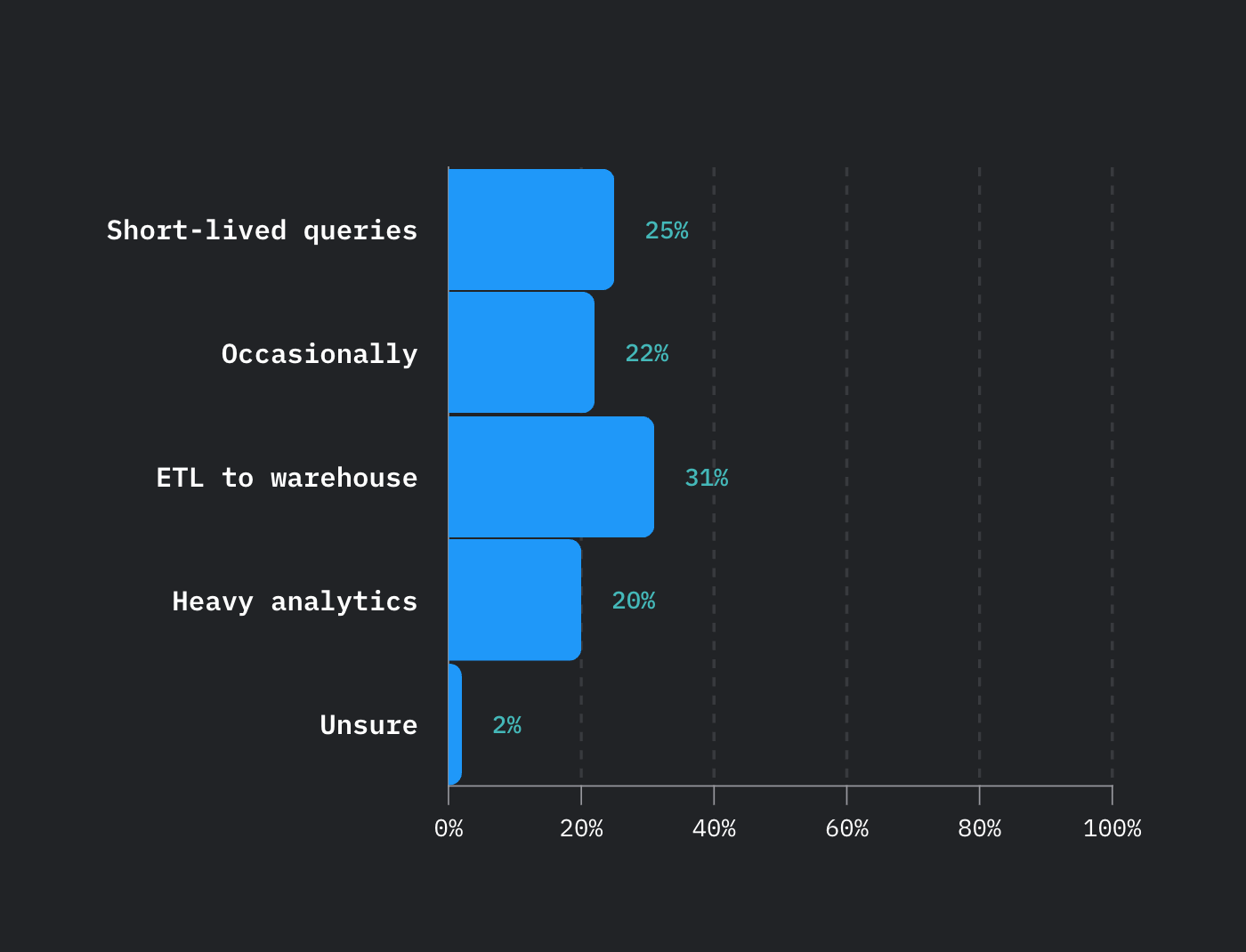
Responses show a fairly even split between teams limiting their primary databases to short-lived queries and those running ETL or analytics directly on them. This balance may indicate growing confidence in managed database performance but also a tendency to blur transactional and analytical boundaries.
The variation reflects ongoing experimentation with how best to combine real-time and batch workloads.
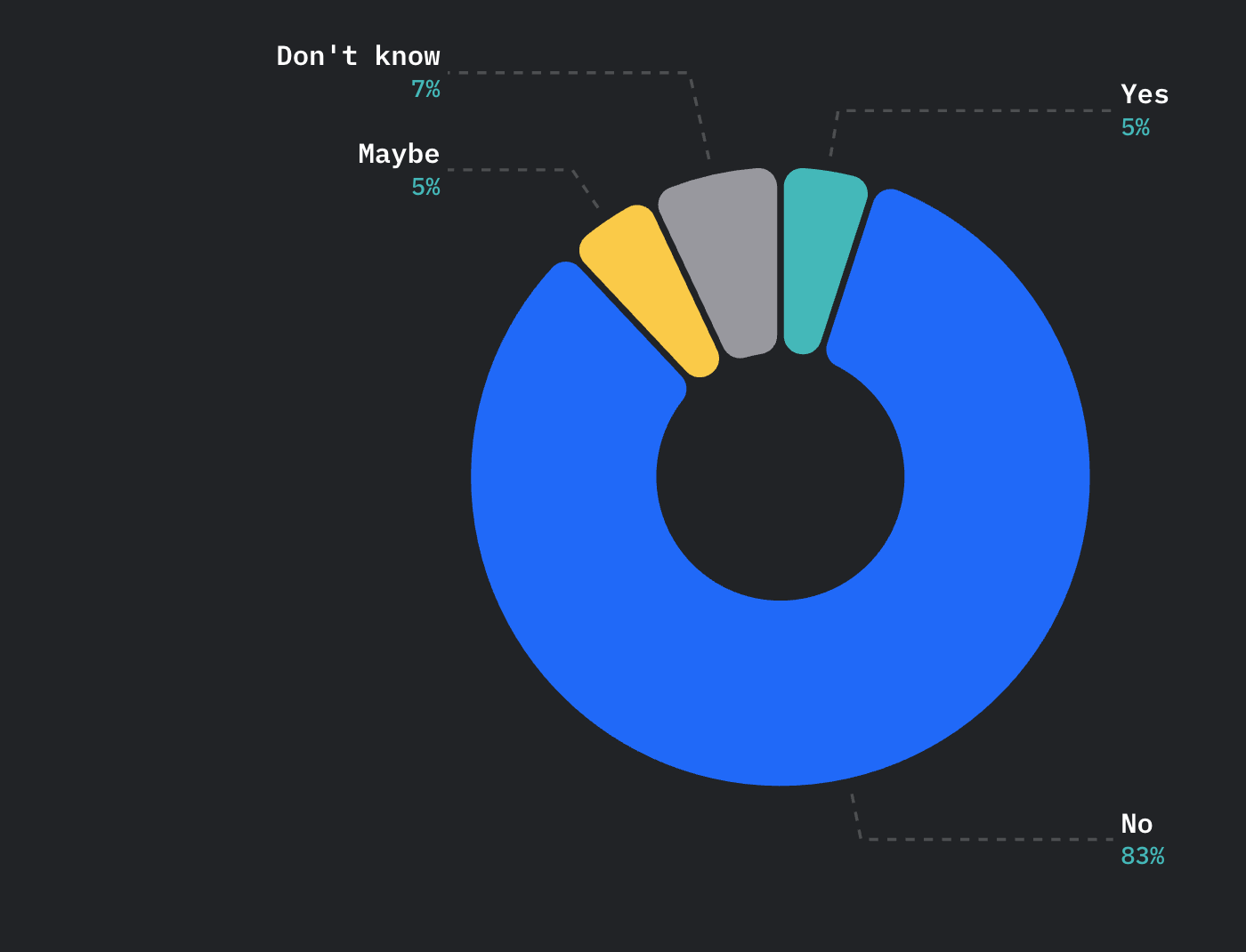
A strong majority report no plans to change their primary database in the near term. This stability implies broad satisfaction with existing technology choices and limited appetite for migration risk.
The small group considering a switch may reflect teams exploring specialized needs or platform cost optimizations rather than wholesale stack changes.

Smaller organizations still make up most of the respondent pool, though participation from mid-sized companies continues to grow. That broader mix brings a wider range of operational practices, from lightweight managed deployments to more complex multi-replica and hybrid setups.
The results reflect both early-stage agility and the emerging discipline of scaling production workloads.
Curious how things have changed since 2024? Check out our previous Startup Database Trends 2024 results.
See 2024 resultsWe’d like to thank everyone who participated in and shared this year’s survey. Your input helped us better understand how teams are building and managing their databases, and your contributions made this report possible.